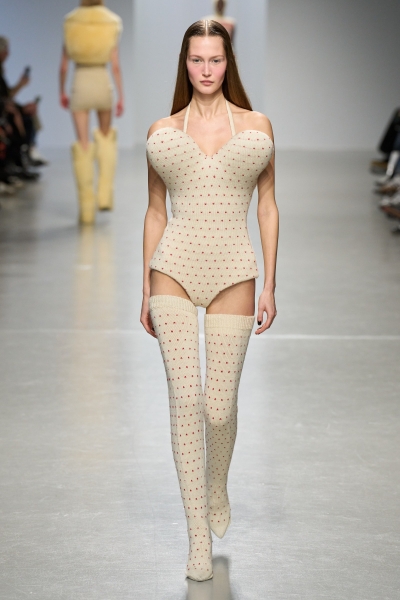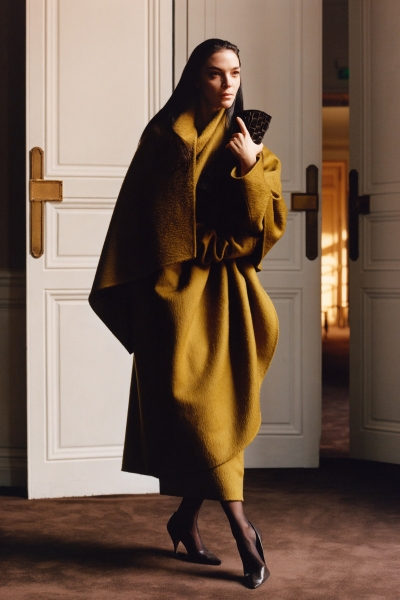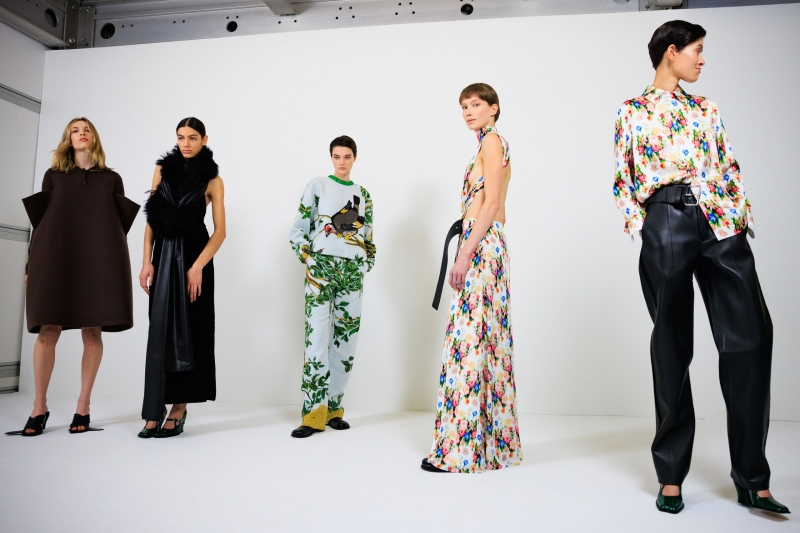
Nicole Phelps: There were 108 shows and presentations at Paris Fashion Week this season, a record, as our colleagues at Vogue Business pointed out. Too many to see them all, let alone come up with an organized way of ranking them from best to worst, and so we go on gut feelings, or, as Sarah Mower so memorably put it when remembering an agenda-setting Miuccia Prada show from the ’90s, “the nauseous sensation—where your stomach turns upside-down—when you know that you’re witnessing a fashion revolution taking place.” No fashion flu for me this week, thank goodness, but I was moved to tears by Jun Takahashi’s Undercover. Like the big houses, he’s gleaned that runway shows are now entertainment, but instead of bombast he chose intimacy, a heartrending poem spoken aloud on the soundtrack by the director Wim Wenders that touched on the themes of his new movie Perfect Days, about the value of ritual and the preciousness of the mundane. Of course, mundane doesn’t enter the equation even when Takahashi is designing quotidian items. Days later, our fellow Vogue editors are still talking about the way he inserted metallic tinsel in the seams of his jeans (as you’ll discover on tomorrow’s The Run-through podcast, please tune in).
The talk this week has been of a new dressier or formal sensibility running through the fall collections. I see it more as enhanced realism. The designers who gave it to me in Paris, beyond Takahashi, were Dries Van Noten with his audacious color mixes and Lutz Huelle with his highly wearable hybrids. I’d like to mention Sacai’s Chitose Abe as well, who keeps on coming up with fresh ways to explore (explode?) her silhouette. All of these collections gave me that tingly feeling (different than the stomach-turning Sarah talked about, but close) that makes me want to shop again, or at the very least climb into my wrecked post-fashion month closet and work up some new combinations.
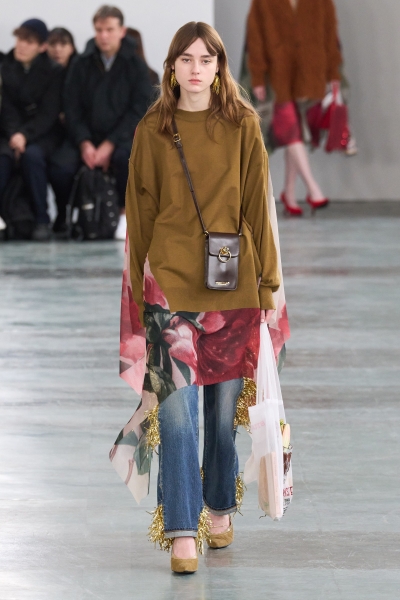

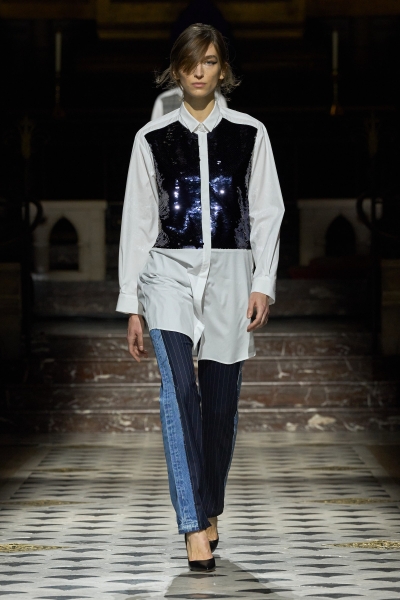
Sarah Mower: I agree, Nicole, the reward of being at great fashion shows is the sensation—the being able to feel or see something you couldn’t have guessed at before you went in. It also sunk in this season exactly how much it’s a competition for space in our memories. The battle not to be forgettable is real. When you’re immersed in it, it really stretches the limits of what it is to be human; how much our brains can take on board, what touches us, what will stick in there after the moment? How do we give names to what we felt and why? There have been a lot of conversations and confrontations around those very subjects this past 10 days, and what is already being done to us by the invasion of social media and AI.
Memories can’t always be bought by vast budgets. The shows that stick in my mental hard drive actually bear little correlation to how much was spent on them. Undercover, Loewe, Courrèges, Comme des Garçons, Balenciaga, and Miu Miu are top of my mind, and each for completely different reasons. Equally, it was seeing and speaking to Róisín Pierce, Steve O Smith, Paula Canovas del Vas, and to all the emerging designers who were in the LVMH Prize showroom. Big brands are constantly trying to convince us that they know all about what “ young people want,” but that can’t be done by marketing data and reading the runes of algorithms. Youth points to what age does not yet know or is deaf to.
Human creativity is unquantifiable, uncontrollable, intimately personal, renegade, and out-there. Machines can’t count any of that, but to me, it’s still what makes fashion so exciting, so full of possibility, wonder, and intellectual challenge. Beauty, sexuality, struggle, anger, tenderness, satire, angelic intentions, phenomenal artistry, and raw honesty were tied up in the shows and experiences I found unforgettable. Undercover was shocking because it made every woman there feel, by contrast, how little our daily, interior lives are seen, heard, and respected by fashion. Loewe: in a class of its own for the way Jonathan Anderson brilliantly configures clothes, while settling us a cultural jigsaw-puzzle to solve. Nicolas di Felice at Courrèges for (excuse the filthy pun) fingering something that gives women pleasure, as well as giving great 21st century French design. What Rei Kawakubo had to say about her anger stabbed me to the heart.
There was a lot of talk about nostalgia this week, another form of talking about memories. Some seem to believe that there is something inherently bad in looking back to retrieve ideas for now—what are they talking about? I’m guilty as charged for liking what Chemena Kamali did with Chloé and Virginie Viard with Chanel. It tapped into my own nostalgia—the source imagery from Vogue in the ’70s and ’80s that first made me dream about fashion, and throw a fit because my mother wouldn’t buy me platform boots. Likewise with Miuccia Prada, who at Miu Miu was mining her own memories of childhood and girlhood, and the older women she looked up to in Milanese society as she was growing up in the ’50s, ’60s and ’70s. Fashion comes at us from all directions, all of the time, and it’s too much—as Demna demonstrated at Balenciaga. Still, it’s always our individual human minds that delete or remember what we saw—and what it made us feel.
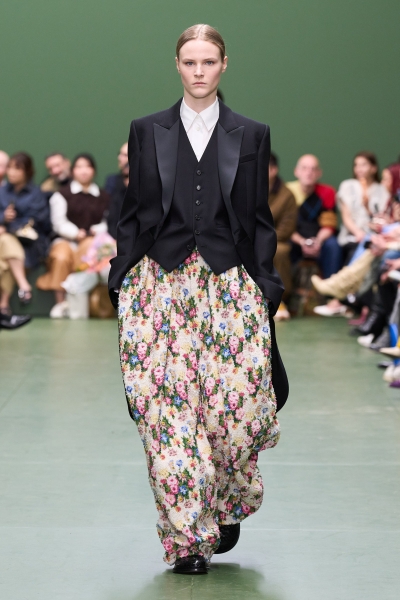
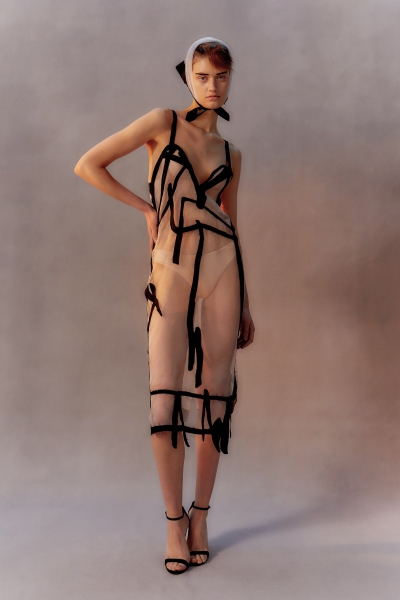
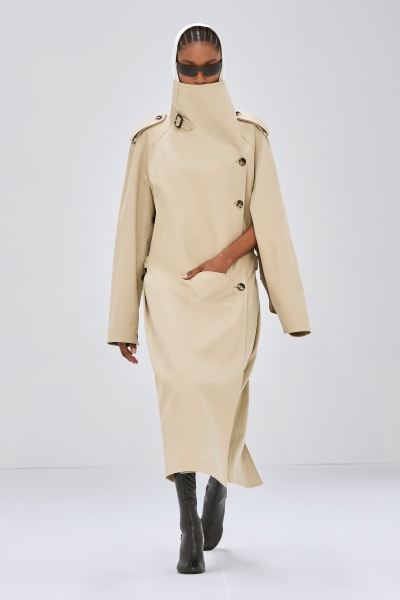
Luke Leitch: Snap, Nicole: Undercover will totally live on in my frazzled gallery of stand-out show memories this Paris season. Those jeans were indeed great—there were a lot of raggedly bedazzled denims this week, I think picking up on the work of Jeanne Friot—and I also loved the check-edged gabardine tracksuit: this looked like the perfect Burberry garment, just not at Burberry.
Another designer who leaned deeply and coherently into the everyday was Marine Serre: her show at Ground Control was excellent—a real if moonlit reflection of contemporary Paris—and I hope she can keep growing this great woman-owned indie label on her own terms. Another show that dealt with the daily in an invigorating way was Courrèges; beneath the masturbation pockets (so to speak) and the runway which was itself in the throes of passion, I thought this collection cleverly alluded to the purest reason to engage in fashion: for your own satisfaction. Unlike other ostensibly “sexy” collections, this one (and Serre too) seemed designed only secondarily to stimulate others: the primary audience here was the women who will purchase in order to pleasure themselves. Less allusively, Undercover was also about delighting in the daily.
Rick Owens looked strong: I love the collision of grandeur and intimacy that bringing his designs and domestic reality together has created this season in both menswear and womenswear. Another show I couldn’t get to—just swoon over from afar—was Róisín Pierce; the combination of craft and sensibility in her possession is subtly specific and very lovely. Sitting across from Paul and Ringo at Stella McCartney was the closest I’ll ever get to immortal greatness, and the collection struck a chord too. The newly colorful Noir Kei Ninomiya was a trip: relying solely on radical savoir-faire and imagination he delivered a show that was every bit as pleasurably hallucinogenic as Balenciaga’s mind-blowing (and surely multimillion-costing) set.
Elsewhere, Olivier Rousteing’s typically high-octane and eloquently gestural Balmain collection that so generously reflected his formative years in Bordeaux was also a highlight. As for The Row, I have to tell you there were several people in the show who either ignored the designer’s request not to capture content, or didn’t get the memo: sharing it, I guess, was another matter. If elegance is refusal then the brand’s decision to refuse to be just more visual fashion-sausage for the Gram was elegant indeed, but the flip side is that for all of those who love the brand but couldn’t be at the show, it might also look kinda snooty.
Returning to the subject of pleasure, Paris was packed with it. Of course there is no light without shade, and not every collection made my heart soar: oh no. But I try never to take for granted how lucky we are to be here, doing this, at all. Tiziana, what made you happily nauseous this last week?
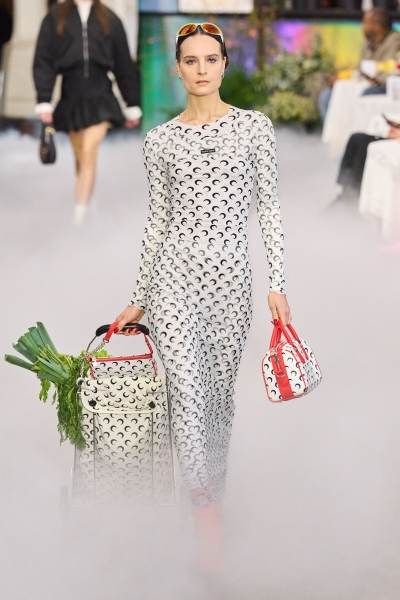
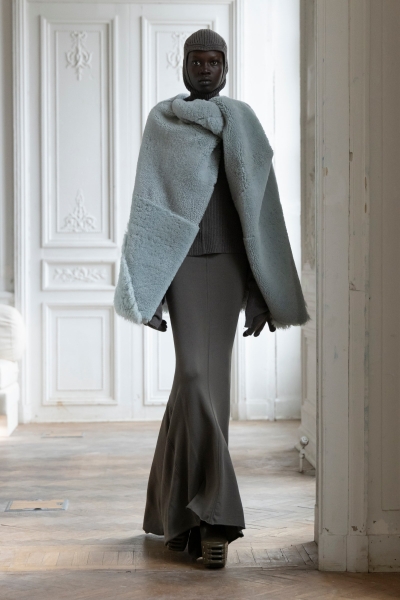
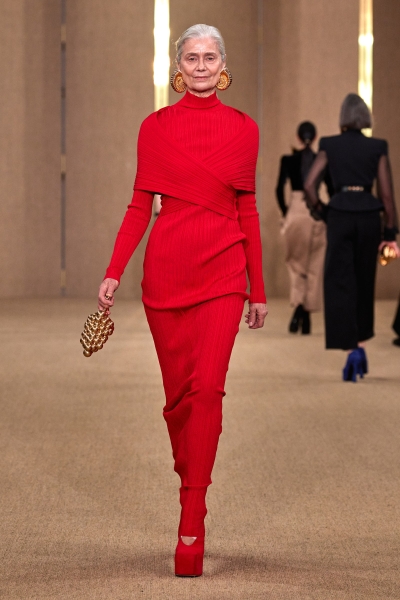
Tiziana Cardini: Allons enfants! Paris felt like a buffet of French pâtisseries— Macarons! Millefeuilles! Religieuses! Mousse au chocolat! Delicious, but trop de beurre. Our visual and intellectual digestive systems have been seriously put to the test. So yes, Luke, the incessant stimulation left me happily nauseous—in retrospect, Milan felt like an ascetic Weight Watcher’s menu. So to keep my fashion diet somehow balanced (wishful thinking really), I’ve tried to edit my PFW assiette to just a few exquisite amuse bouche.
Paris was all about making the everyday look fabulous—the quotidian has never been more attractive, a beau mariagebetween imagination and practicality, fantasy and pragmatic wardrobing. I’d take anything from Undercover—it was my favorite show by far, rare and soulful, melancholy and touching. And the clothes were brilliantly inventive. On the subject of mind-blowing brilliance, Loewe was also a standout—I’d take the humongous floral harem pants worn with the split-tail black morning suit, sardonically Saltburn-esque, and the beaded asparagus bag that actually reminded me of the majolica centerpiece in which my grandmother used to serve, obviously, asperges en vinaigrette.
On the less-obvious-treatment-of-the-everyday front, I’m liking what Louise Trotter is doing at Carven; her POV is positively askew and irreverently polished. As our colleague Amy Verner said in her review, Trotter has “a laissez-faire approach to ladylike.” Which is the exact opposite of what’s happening at The Row, where the narrative is so obsessively controlled. The iPhone didn’t bother me in the least, as I was rather glad for once to take a pause from watching shows through the screen of a seat mate. So annoying. When it comes to etiquette, it’s a jungle out there; Emily Post would’ve died of heartbreak. That said, The Row is getting more divine every season; there was a whiff of couture in the Balenciaga-esque (as in Cristòbal) volumes that added a layer of rarefied complexity.
Other deliciousness included the single-mindedness of the all-black Valentino show; beyond the obvious chic fou of the collection, replete with exquisitely crafted, handsome pieces, I felt that Pierpaolo Piccioli wanted to convey a subtle, sensitive, respectful message of mourning for the alarming state of the world; it was about a sense of elegant, at times austere restraint that felt timely. As for le dessert : young talents Paolo Carzana (I loved his Shakespearean romanticism), Duran Lantink (a virtuoso of padding), and Zomer (artsy colorblocking and conceptual take on shapes) are promising and worthy of attention. They’re not yet main courses, but with Paris Fashion Week’s generous support and exposure, they could become perfectly cooked soufflés.

